What is Newsjacking? How One Timely Article Got Us 200 Backlinks and 17,000 Readers
Newsjacking is the art of injecting your ideas into a breaking news story so you and your ideas get noticed - a term coined by marketer David Meerman Scott in 2011. In practical terms, it means quickly creating relevant content to ride a sudden wave of interest or media coverage.
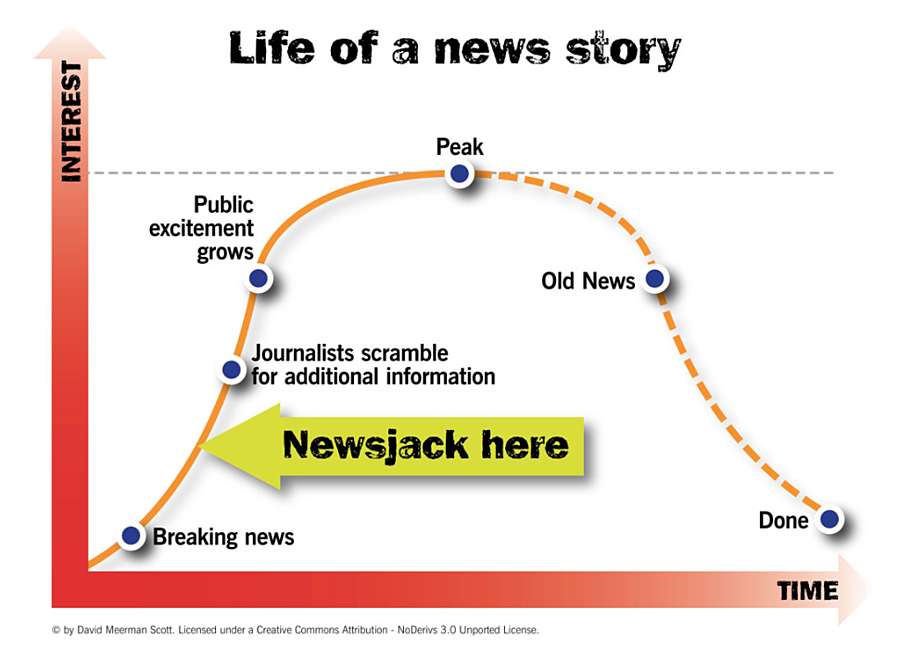
A few weeks ago, something unexpected happened. We published an article about "vibe coding" on our blog, and it went a bit viral. Nothing earth-shattering by internet standards, but for our modest blog, getting 17,000 readers and 200 backlinks from a single post was a significant win.
There was some luck involved, but it wasn't an accident. It was newsjacking, and it worked brilliantly.
Now before you roll your eyes and picture corporate Twitter accounts awkwardly inserting themselves into tragedies or jumping on hashtags, hear me out. That's only one small (and often cringeworthy) corner of newsjacking. What I'm talking about is much more valuable, and ethical.
In this article, I'll share:
- How we turned a niche tech trend into a significant traffic boost
- Real examples of creators and small businesses using this effectively
- Practical ways to spot opportunities in your own niche
- How to balance speed with quality when trends emerge
- Why you don't need a complex strategy to benefit from this approach
I'm not going to promise you'll get a million visitors or that this is some "game-changing" tactic that will "revolutionise" your business overnight - I can hear your eyes rolling in their sockets from here. That's not how this works. But I will show you how even modest results from well-executed newsjacking can deliver outsized returns for creators who understand the approach.
First, let me be clear about what newsjacking is not
We'll get into the how and why shortly, but let's start with clearing up some basics.
- Newsjacking isn't just for big brands with social media teams. Independent creators and small businesses (like us) can often be more nimble and authentic.
- It isn't exclusively about viral social media posts. It can take the form of blog content, tools, creative projects, or community contributions.
- It shouldn't be tasteless, exploitative, or tone-deaf. The best newsjacking adds value or a new angle to a conversation.
- It doesn't require a complex infrastructure or strategy. Often it's simply about recognizing opportunities in spaces you already follow.
Newsjacking differs from regular content marketing or real-time marketing because it specifically leverages breaking news or rapidly emerging trends, rather than evergreen topics or planned campaigns. It's a time-bound gamble.
Our Success Story: The Vibe Coding Article That Angered Hacker News
I wasn't planning to write an article on vibe coding initially. It started as a segment on our podcast where we discussed this emerging concept in tech circles. If you're not familiar, "vibe coding" refers to a coding approach focused more on aesthetics and feeling than technical perfection—making software that feels right rather than optimizing every line of code.
The concept was gaining traction on Twitter and in tech communities, but almost no one had written articles of any great substance about it yet, let alone a guide on how to do it yourself. That's when I spotted the opportunity.
And I'm glad I did. Because it 10x'd our little blog's backlinks, and earned us a boatload of traffic.
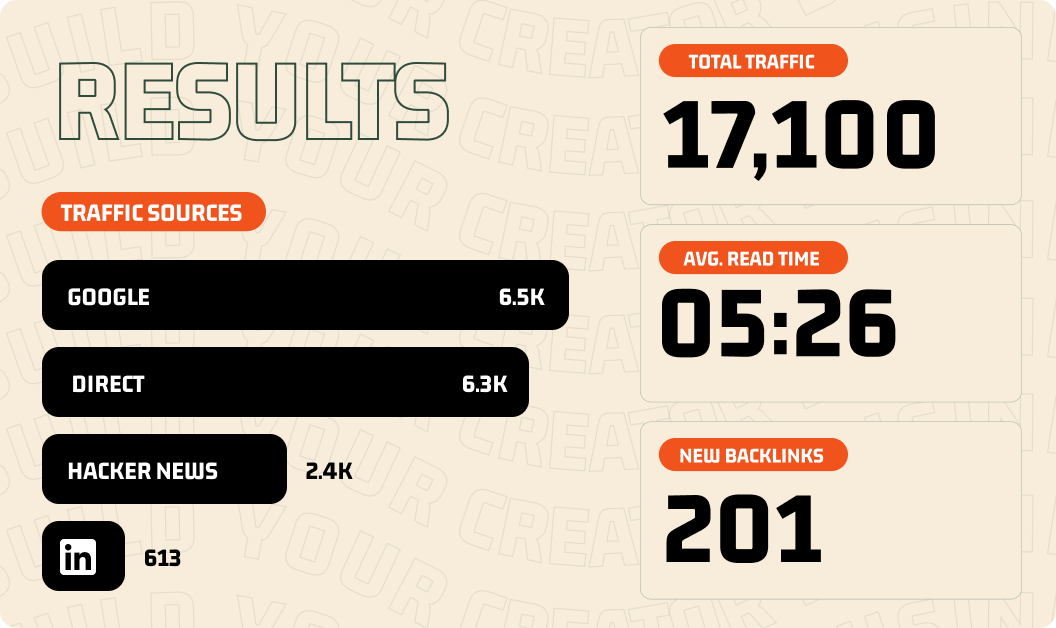
The Research Process
My first step was checking if people were actually searching for this term. In Ahrefs (our SEO tool), the search volume showed zero—normally a red flag. But SEO tools update periodically and miss emerging trends, so I turned to Google Trends instead.
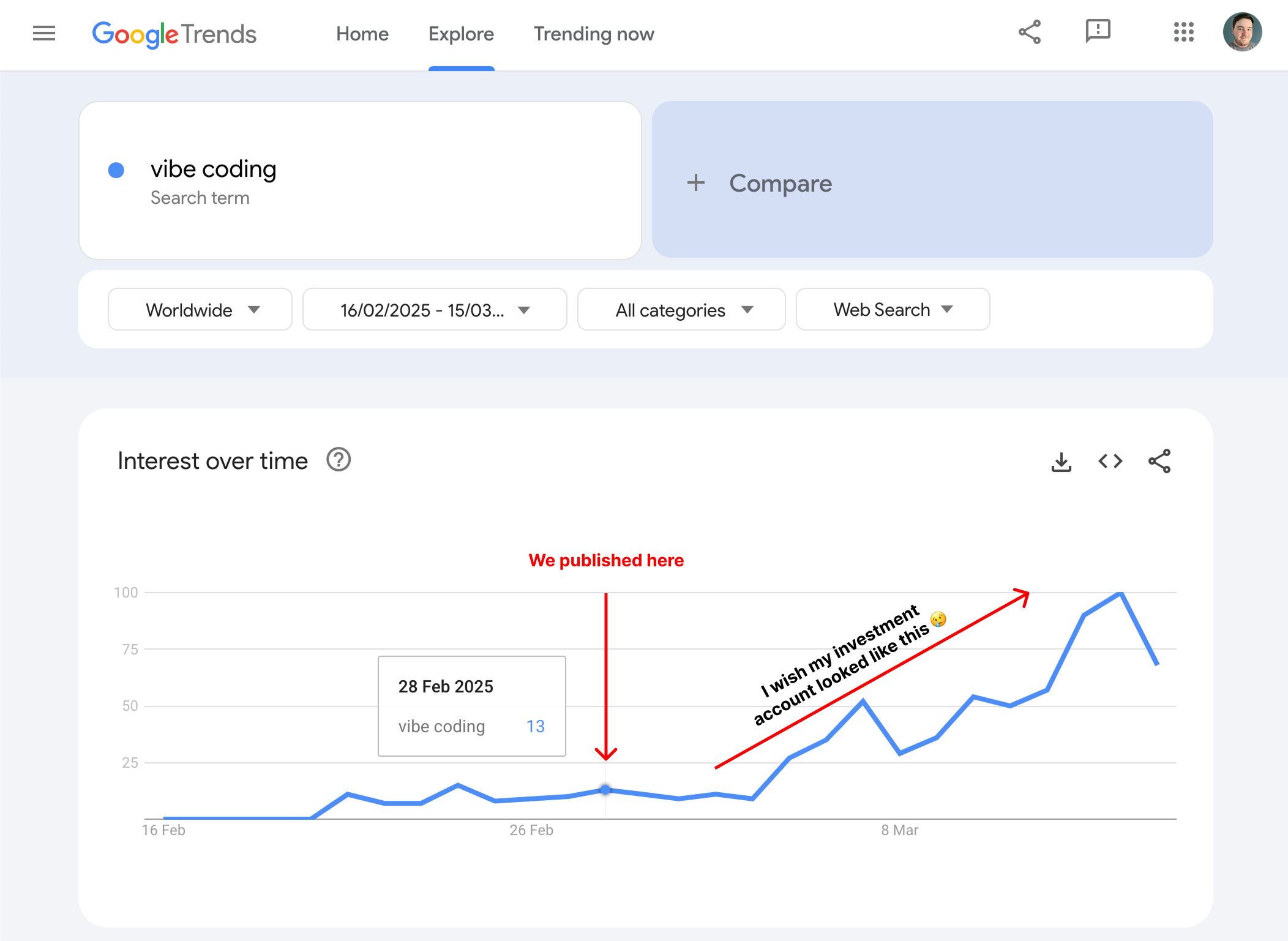
Google Trends showed a clear upward trend over recent days and weeks. Not massive numbers, but definitely growing interest. Since then, the chart has looked a bit like a meme stock.
This mismatch between SEO tools (showing no interest) and social media/Google Trends (showing growing interest) signaled the perfect newsjacking window.
Creating Something Valuable (Quickly)
I decided to write a comprehensive article explaining vibe coding, better than anything that was turning up on the first page. The bar wasn't high, so making it more informative and detailed was a given - but I chose a unique angle: how it applies to content creators specifically.
Here's how I approached the article:
- I took the transcript of our podcast episode as a foundation
- Recorded some additional thoughts about how vibe coding relates to creators
- Combined these transcripts and used my tailored Claude project to help generate an outline (saving time while maintaining quality)
- Used OpenAI's Deep Research for research assistance to find examples while I focused on writing
- Created a mini-tutorial showing exactly how someone could apply vibe coding in their work
- Then used Deep Research again to help me find gaps vs other top ranking articles, opportunities for me to go deeper and provide more value.
The entire process took about a day, more than my usual half-day for an article, but still really quite quick for the depth of content - I thought so anyway!
Distribution Strategy
I knew what I wanted to achieve with the article:
- Become a source for Perplexity and feature in their inevitable article about it
- To do that, I need to rank on the first page of Google, which is fine because that's been the plan all along
- So to get backlinks I'm going to need backlinks... ugh. SEO.
So with the article done and published, I instantly started promoting it EVERYWHERE.
Just kidding, it was Friday night. Beer o'clock. So I did that the next morning instead, and rather than posting it 100 places, I just picked the one place it would stand a good chance of being enjoyed/criticised.
I submitted it to Hacker News, a niche tech forum. Timing mattered here and the beers played in my favour, I posted on a Saturday morning when competition for attention was lower.
And right enough, it went to the first page within 30 minutes. And poor Colin received an onslaught of Slack messages from me as I watched our live traffic.

Not long later, the article shot to the top of Hacker News, driving significant traffic. It didn't stay there particularly long, but for us it was long enough.
Interestingly, in the end, the comment to upvote ratio was... ugly. Over 150 comments to only 84 upvotes. It made people mad, which honestly was not my intention. But hey, it worked for us. Turns out tech people are the biggest luddites 🤷♂️ Sorry HN.
From the front page, it was picked up by aggregator sites, then Google, and eventually made it into Perplexity (an AI search engine), exactly as I'd hoped. This sequence generated the 200+ backlinks and 17,000+ readers.
The most compelling statistic? Average time on page was 5.5 minutes—people weren't just clicking, they were actually reading and engaging with the content. That's the sort of feedback that gets creators out of bed in the morning!
A Step-by-Step Guide To Newsjacking
Despite my insistence that there's "no science" to newsjacking, there are definite best practices that can increase your chances of success.
For me, I'm going to keep doing what I'm doing... which is chasing things I'm interested in, reading the same forums, following the same social niches. That suits me, and it means the next time I catch a trend early, there's a good chance I'll be able to contribute to the conversation based on personal interest or experience.
Here's a systematic approach that still leaves room for creativity and spontaneity:
1. Monitor Relevant Trends and News
Start by paying attention to trending topics in spaces you're already familiar with:
- Use Google Trends to see what's gaining search momentum
- Set up Google Alerts for key terms in your industry
- Follow industry forums and communities (like Hacker News for tech)
- Check trending hashtags on social platforms you use
- Subscribe to niche newsletters that highlight emerging topics
- Try tools like TrendFeed that aggregate trending topics across platforms
Look specifically for that sweet spot where something is gaining momentum but hasn't yet reached mainstream saturation.
2. Evaluate the Opportunity
Not every trend is worth jumping on. Ask yourself:
- Is this trend relevant to my audience or expertise?
- Can I add a unique perspective or value?
- Is there still time to create something before the conversation peaks?
- Is this appropriate for my brand to comment on? (Avoid tragedies and divisive issues)
- Do I have the resources to create something substantial quickly?
3. Find Your Unique Angle
The key to successful newsjacking is contributing something valuable, not just echoing what everyone else is saying:
- Connect the trend to your specific audience's needs
- Offer a perspective that hasn't been widely covered
- Apply your particular expertise to the topic
- Create a resource that helps people understand the trend better
For our vibe coding article, we specifically focused on how this tech concept applied to content creators—an angle no one else had explored.
4. Create High-Quality Content Quickly
Speed matters, but not at the expense of quality:
- Use your existing workflows and tools to accelerate production
- Leverage AI assistance for research and organizing information
- Focus on your unique contribution—don't waste time recreating what's already out there
- Ensure factual accuracy (verify all claims before publishing)
- Include specific examples, data, or visuals when possible
5. Distribute Strategically
Getting your content in front of the right people quickly is crucial:
- Identify communities where people interested in the topic gather
- Share directly to relevant subreddits, forums, or social media groups
- Tag relevant accounts or use appropriate hashtags (without spamming)
- Consider if a small paid promotion budget would help expand reach
- Engage genuinely with comments and questions to build momentum
For the vibe coding article, posting to Hacker News was far more effective than just sharing on our social channels, because that's where the conversation was already happening.
6. Track Results and Learn
Each newsjacking attempt is an opportunity to learn:
- Monitor traffic, backlinks, social shares, and time on page with tools like Google Analytics and Ahrefs
- Note which distribution channels brought the most qualified readers
- Identify what aspects of your content resonated most (through comments and shares)
- Document your process and results for future reference
Recent Newsjacking Success Stories from Creators and Small Businesses
Newsjacking comes in lots of shapes and sizes, from the form the trend takes to the contribution you make. Here are some really clever case studies that you can learn a thing or two from:
1. Tobey Time Crochet - Bernie Sanders Meme Doll (2021)
During the 2021 US Presidential Inauguration, a photo of Bernie Sanders bundled up in mittens became a global meme. Tobey King, who runs a small crochet business in Texas, quickly created a crocheted Bernie doll complete with tiny mittens.

Rather than just selling it, she put it up for auction on eBay with proceeds going to Meals on Wheels (the same charity Sanders was supporting with his own merchandise). The doll sold for $20,300, and eBay matched the amount, resulting in a $40,600 donation.
This ethical feel-good approach earned Tobey coverage in major publications like CNN, Business Insider, and The Guardian. While she didn't profit directly from the auction, she sure did get a boatload of free advertising.
2. Heinz's "Ketchup and Seemingly Ranch" (September 2023)
When Taylor Swift was spotted at a Kansas City Chiefs game with Travis Kelce, a single fan photo of Swift holding a piece of chicken with "ketchup and seemingly ranch" went viral on social media. Swifties latched onto the phrase "seemingly ranch," turning it into a trending hashtag almost overnight.
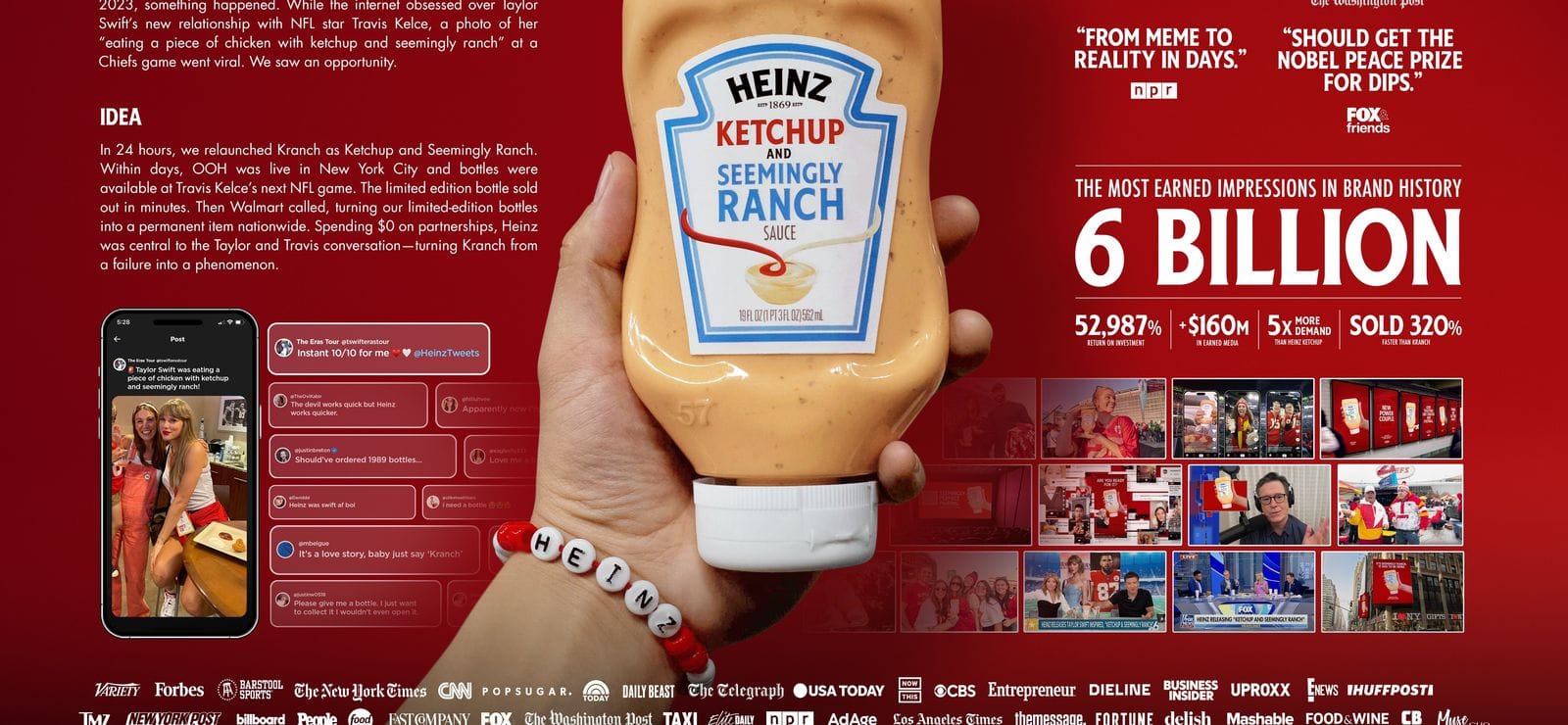
Sensing an opportunity, Heinz quickly announced a limited-edition "Ketchup and Seemingly Ranch" bottle, playfully referencing the meme. The product reveal sparked national coverage in outlets like People and USA Today, driven by Swift's massive cultural influence and the novelty of combining two condiments in response to a viral moment.
Heinz's timely response took a lighthearted internet joke and transformed it into a tangible (and highly shareable) marketing win—in other words, textbook newsjacking.
3. Harken Coffee - Safe Space Initiative (2021)
When news broke about a woman being followed by a stranger in downtown Vancouver, local café Harken Coffee responded by declaring itself a "Safe Space" for anyone feeling threatened. They created a protocol where customers could order a fictitious "non-fat Americano" as a code to signal staff for help.
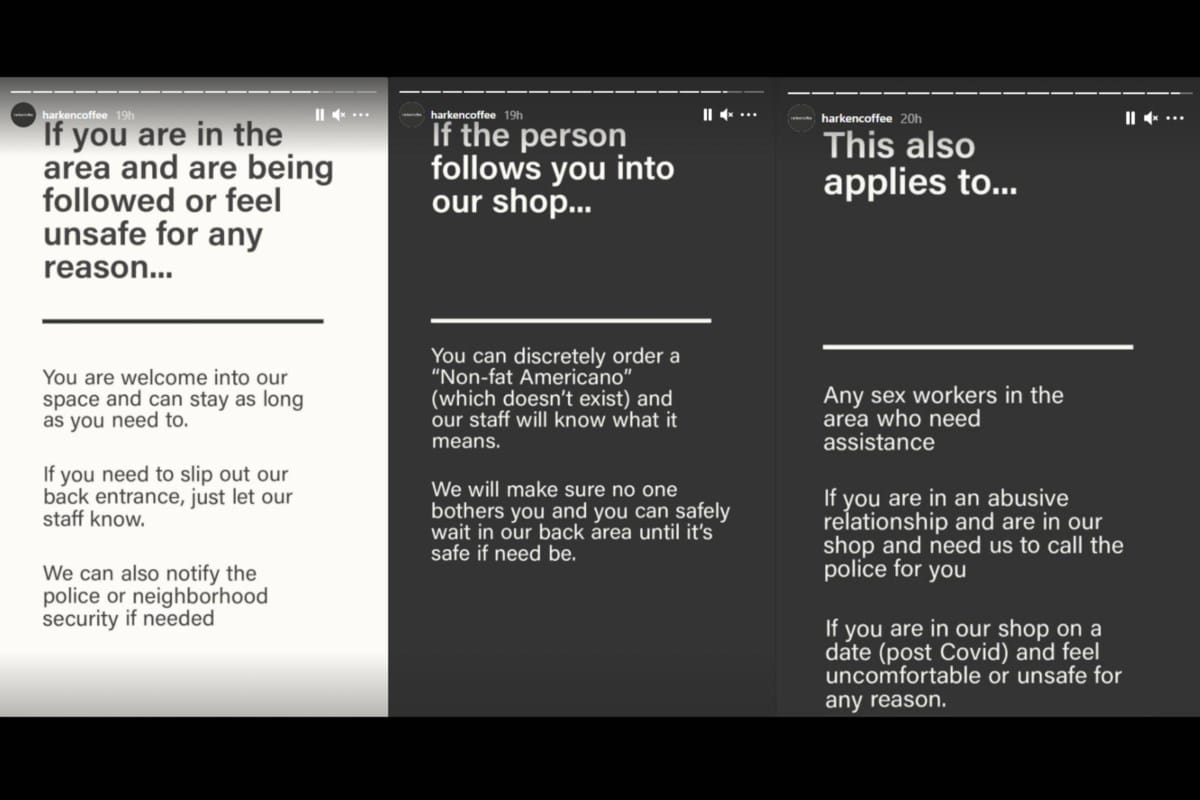
This initiative was quickly picked up by local media and earned widespread praise on social media, as reported by Vancouver Is Awesome. Many women specifically mentioned they would patronize the business because of this stance. By responding to a local news story with genuine community support, Harken demonstrated how newsjacking can be both socially responsible and good for business.
4. Heat Pump Installation Guide
In my previous role at a marketing agency, we worked with a heat pump installation company when new government legislation was announced. While everyone was confused about the implications, we quickly created an ultimate consumer guide explaining the new laws in plain English.
We included expert insights from our client and ran targeted ads promoting the guide. The campaign generated thousands of leads at just 20p each and directly attributed six-figure sales. Years later, that guide is still being used.
This example shows that newsjacking doesn't have to be purely organic content—it can drive direct sales when approached thoughtfully.
5. Every.to's Lex - AI Writing Tool (late 2022)
When ChatGPT and AI writing tools were exploding in popularity in late 2022, the team at Every.to quickly built Lex, an AI-assisted word processor. By launching while interest in AI writing was peaking, they secured 25,000 user signups in their first 24 hours, according to their announcement post.
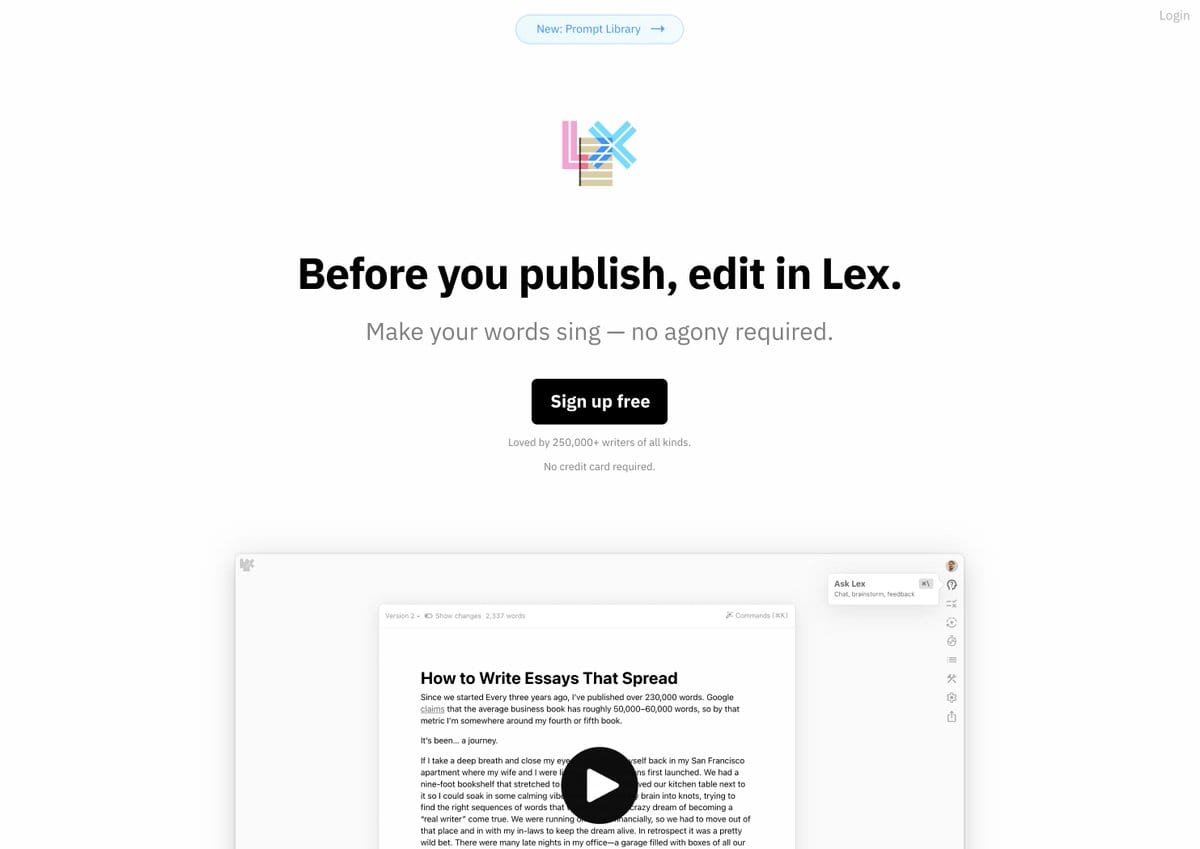
They didn't just comment on the trend—they created a tool that addressed people's curiosity and needs at exactly the right moment.
6. SparkToro's Twitter Bot Analysis
During Elon Musk's Twitter acquisition saga, a public dispute erupted over the percentage of fake accounts on the platform. SparkToro quickly analyzed 40,000 Twitter accounts and published research showing about 19.42% appeared to be fake—nearly four times Twitter's official estimate.
This timely research garnered 500+ press mentions in outlets like Associated Press and Business Insider, driving 23,000 unique visitors to their site in a single day, as detailed in SparkToro's case study. Their domain expertise made them the perfect source for journalists covering the story.
7. Ask Marcus - My Personal Project
I created a small tool, just for fun, called "Ask Marcus" that allowed people to "talk" to Marcus Aurelius using AI, with quotes from his work "Meditations" and some shameless affiliate links to buy yourself a copy.
Though I had no audience at the time, I submitted it to directories featuring cool AI projects. Several big newsletters picked it up, resulting in thousands of users.
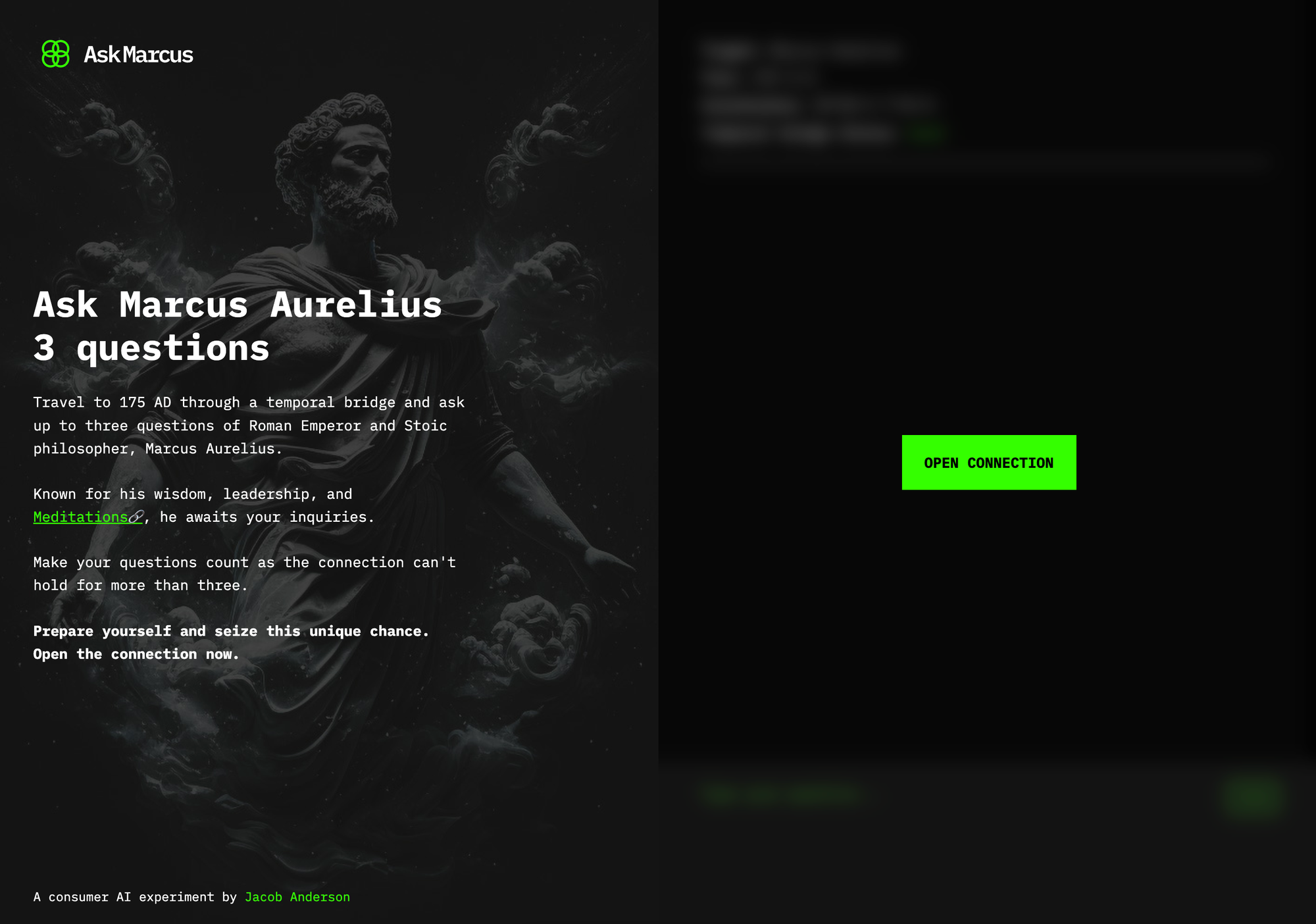
This shows you don't need an established audience to benefit from newsjacking—you just need to create something relevant and timely, then get it in front of the right communities.
How to Find Newsjacking Opportunities (Without Disrupting Your Workflow)
I don't believe there's a rigid science to finding newsjacking opportunities, which is why I don't recommend building an entire content strategy around it. Instead, here's how to tune your existing habits to spot potential opportunities:
1. Pay Attention to What Interests You
The vibe coding trend caught my eye simply because I was already spending time in tech communities where people were discussing it. The most natural newsjacking opportunities will come from communities and topics you're already engaged with.
Don't force yourself to monitor trends in areas that don't genuinely interest you—you'll burn out and likely miss the nuances that make for authentic content.
2. Use the Right Tools (Beyond Just Social Media)
While social media can signal emerging trends, don't rely solely on trending hashtags. Consider:
- Google Trends: More current than SEO tools for spotting rising search interest
- TrendFeed: An app that aggregates trending topics across platforms
- Specialized forums in your niche (like Hacker News for tech)
- Industry newsletters that highlight emerging topics
- Topic-specific subreddits where early discussions often happen
- Social listening tools like Sprout Social (if you can justify the cost)
3. Recognize When Something Is Still Niche
The sweet spot for newsjacking is when something is gaining momentum in a specific community but hasn't yet reached mainstream awareness. Signs to look for:
- Increasing mentions in specialized communities
- Growing search interest in Google Trends
- Few comprehensive articles or resources available
- Journalists just beginning to cover the topic
Once a week, take 15 minutes to:
1. Check Google Trends for your industry category
2 Scan the specialized forums and communities you already participate in
3. Note any topics that seem to be gaining traction but aren't yet saturated
4. Decide if any are worth pursuing further
4. Compare Multiple Data Sources
When I spotted the vibe coding trend, I noticed a disconnect between Ahrefs (showing zero search volume) and Google Trends (showing growing interest). These mismatches often signal emerging trends that SEO tools haven't yet captured in their databases.
When you see something trending in one place but not others, that's often your opportunity window.
Ethics, And How To Avoid Being A D!ck
Bad newsjacking examples are unfortunately common. The most notorious might be Gap's tweet during Hurricane Sandy: "All impacted by #Sandy, stay safe! We'll be doing lots of Gap.com shopping today. How about you?"
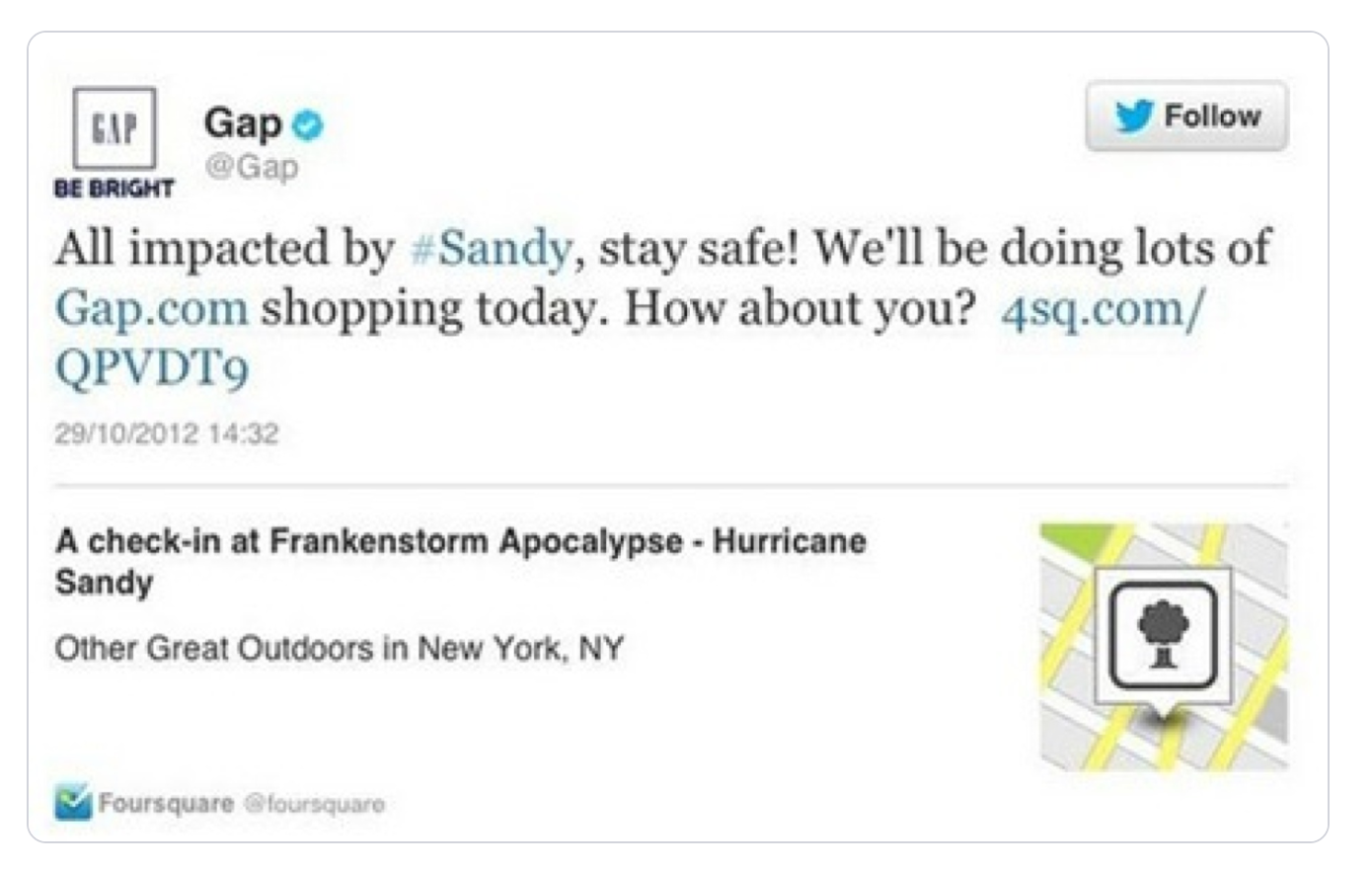
This tone-deaf approach damages your brand and trivializes serious situations. To avoid becoming a cautionary tale:
1. The One Rule: Don't Be a Dick
Simple but effective. Ask yourself if your content helps people or just exploits a situation for attention.
2. Avoid Tragedy
The safest areas for newsjacking are around innovations, cultural moments, and industry changes - not disasters, tragedies, or controversial political events.
3. Add Value, Don't Just Add Noise
If you can't substantially contribute to the conversation, wait for another opportunity. Better to miss a trend than to create something forgettable or harmful.
4. Consider Alignment with Your Brand Values
Tobey Time's Bernie doll worked because the charitable aspect aligned with both the meme's context and her brand values. Our vibe coding article worked because explaining technical concepts to creators is what we do every day.
Is Newsjacking Worth It for Your Creator Business?
The honest answer: it depends.
Newsjacking isn't a primary strategy I'd recommend building your entire content approach around. It's opportunistic by nature, which makes it hard to plan for consistently.
However, when the right opportunity comes along—something interesting in your niche that's gaining traction—being ready to pivot and create something substantial can yield outsized returns.
For our small blog, 200 backlinks and 17,000 readers from a single article was a significant win. The article continues performing well months later, bringing in consistent traffic and establishing our expertise in a growing area.
Getting Started: Your Newsjacking Action Plan
Ready to try your hand at ethical, effective newsjacking? Here's a simple approach:
1. List the communities, forums, and information sources you already regularly check
2. Identify what types of trends in your niche might be worth monitoring
3. Set up Google Alerts for key terms in your industry
4. Create a simple checklist for evaluating potential opportunities (relevance to audience, unique angle you can provide, feasibility of quick creation)
1. Create templates for different content types you might create (articles, tools, social posts)
2. Establish connections with communities where you'll share timely content
3. Prepare an AI prompt template for helping with research and organization
4. Set up tracking to measure results from any newsjacking attempts
Honestly, that's it. I really do believe that Newsjacking is more of a habit to keep in the back of your mind than a science or a big complicated strategy. You can build process around it, or... you can pay attention and every now and then drop everything to gamble on an opportunity to stand out early.
Conclusion: Be Ready, Not Reactive
The most important takeaway: successful newsjacking isn't about frantically chasing every trending topic. It's about training yourself to recognize relevant opportunities in spaces you're already familiar with, then having the skills and processes to act quickly when the right moment arrives.
Our vibe coding success wasn't pure luck, it was spotting a pattern (growing interest in a niche topic), recognizing the opportunity window (before mainstream coverage), and adding unique value (applying it to creators) through quality content.
You don't need to dramatically change your content strategy or constantly hunt for trends. Just stay curious, keep your eyes open in the communities you already participate in, and be ready to create something valuable when you spot an emerging opportunity.
The results might surprise you.
Frequently Asked Questions About Newsjacking
What's the difference between newsjacking and real-time marketing?
Newsjacking specifically leverages breaking news and trending topics, while real-time marketing is a broader term that includes spontaneous content creation responding to any current events, including planned ones like sporting events or holidays.
How quickly do I need to act for successful newsjacking?
According to David Meerman Scott, the ideal window is after the news breaks but before journalists have fully explored all angles. In practical terms, this often means hours rather than days, though it depends on how quickly the news cycle is moving.
Can small creators without large audiences benefit from newsjacking?
Absolutely. In fact, small creators often have an advantage because they can move quickly without corporate approval processes. My Ask Marcus project gained traction despite having no existing audience, simply by being timely and getting in front of the right communities.
Is newsjacking only for social media?
No. While social media makes newsjacking more visible, it can take many forms: blog posts, videos, tools, creative projects, or community contributions. Choose the format that best suits your skills and the opportunity.
How do I avoid a newsjacking backlash?
Be sensitive to the context of the news event, add genuine value rather than just capitalizing on attention, and ensure your contribution aligns with your brand values. When in doubt, ask yourself: "Am I helping the conversation or just exploiting it?"
Have you tried newsjacking for your creator business? I'd love to hear about your experiences—both successes and lessons learned. Drop me a comment below or reach out on Twitter.

